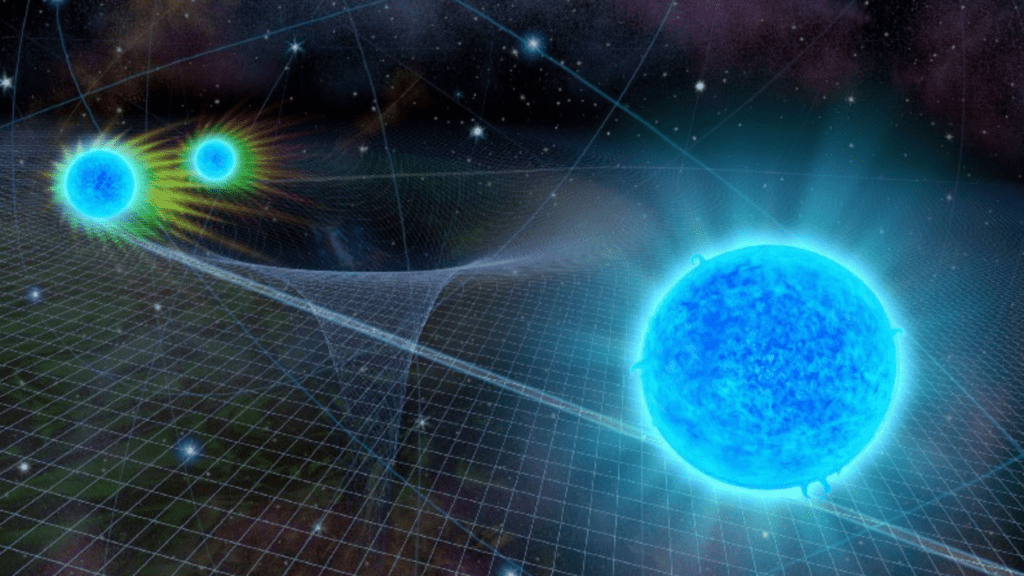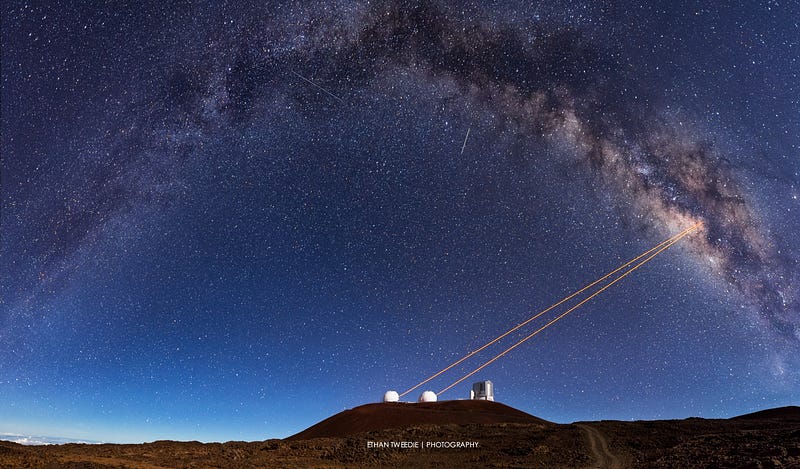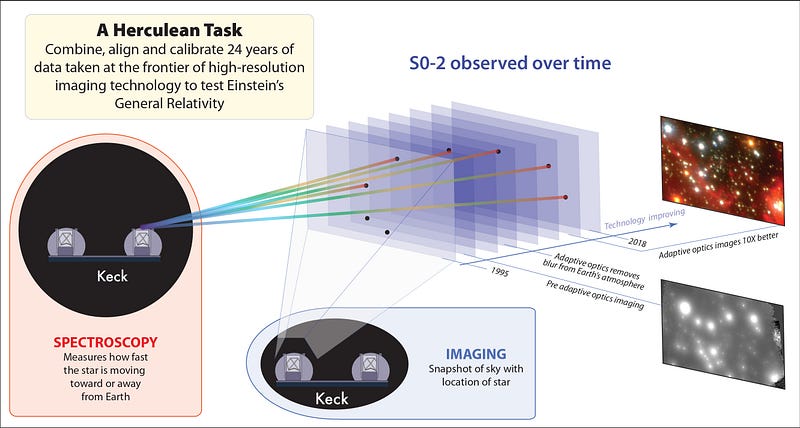Measurements of a star passing close to the supermassive black hole at the centre of the Milky Way confirms the predictions of Einstein’s theory of general relativity in a high gravity environment.

A detailed study of a star orbiting the supermassive black hole at the centre of our Galaxy, reveals that Einstein’s theory of general relativity is accurate in its description of the behaviour of light struggling to escape the gravity around this massive space-time event.
The analysis — conducted by Tuan Do, Andrea Ghez and colleagues — involved detecting the gravitational redshift in the light emitted by a star closely orbiting the supermassive black hole known as Sagittarius A*. The redshift was measured as the star reached the closest point in its orbit — which has a duration of 16 years — to the black hole.

The team found that the star experienced gravitational redshift — which occurs when light is stretched to longer wavelengths and towards the red ‘end’ of the electromagnetic spectrum by the effect of gravity — as it gets closer to the black hole, conforming to Einstein’s theory of general relativity and its predictions regarding gravity.
At the same time, the results defy predictions made by the Newtonian theory, which has no explanation for gravitational redshift.
Ghez says: “(The findings are) a transformational change in our understanding about not only the existence of supermassive black holes but the physics and astrophysics of black holes.”
The major difference between general relativity and the Newtonian calculation of gravity is, that whereas Newton envisioned gravity as a force acting between physical objects, Einstein’s theory saw gravity as a geometric phenomenon.
The presence of mass ‘curves’ space it occupies. Physical objects, including light, must then follow this curvature. As John Wheeler infamously put it: “matter tells space how to curve, space tells matter how to move.”
Testing relativity in regions of high gravity
![Image of the orbits of stars around the supermassive black hole at the centre of our galaxy. Highlighted is the orbit of the star S0–2. This is the first star that has enough measurements to test Einstein’s General Relativity around a supermassive black hole. [Credit: Keck/UCLA Galactic Center Group]](https://cdn-images-1.medium.com/max/800/1*xVbil1TpuBKkgPJLMfAimA.jpeg)
The new research resembles an analysis conducted last year by the GRAVITY collaboration, except in this new expanded analysis, the team report novel spectra data.
Although general relativity has been thoroughly tested in relatively weak gravitational fields — such as those on Earth and in the Solar System—before last year, it had not been tested around a black hole as big as the one at the centre of the Milky Way.
Observations of the stars rapidly orbiting Sagittarius A *provide a method for general relativity to be evaluated in an extreme gravitational environment.
Do explains why these kind of tests are important:
“We need to test GR in extreme environments because that’s where we think the theory might break down.”
“If we can see which predictions from general relativity have deviations, that gives us clues as to how to build a better model of gravity.”

To obtain their results, the team analyzed new observations of the star S0–2 as it made its closest approach to the enormous black hole in 2018. They then combined this data with measurements Ghez and her team have made over the last 24 years.
The team has many avenues of investigations available to them from here, Tuan tells me.
He continues: “Two of them I’m excited about are testing space-time around the black hole by looking at the orbit of the star S0–2.”
“GR predicts that the orbit should precess, or rotate, meaning that it won’t come back where it started.”
The team should also be able to start using more stars other than S0–2 for these tests as the time baseline of observations increase and technology improves
Do concludes: “ These measurements open a new era of GR tests at the Galactic centre so it’s very exciting.”
This research appears in the 26 July 2019 issue of Science.






